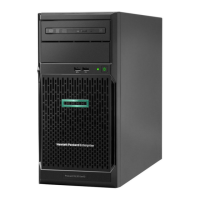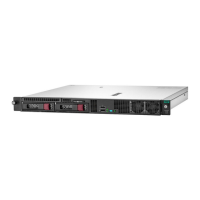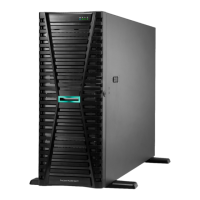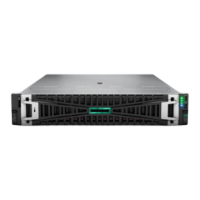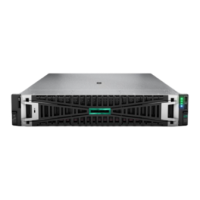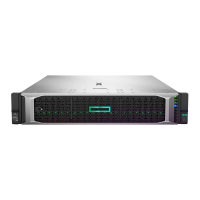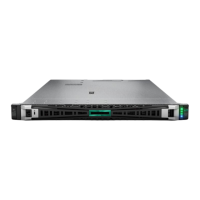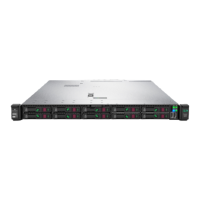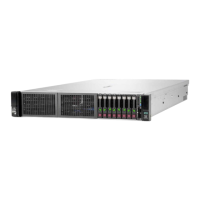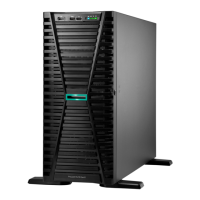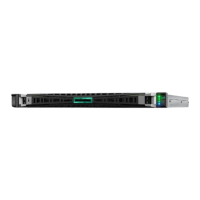When the array has more than three physical drives, drives are mirrored in trios, and the fault-tolerance
method is known as RAID 10 (ADM). If a physical drive fails, the remaining two drives in the mirrored trio
can still provide all the necessary data. Several drives in the array can fail without incurring data loss, as
long as no three failed drives belong to the same mirrored trio. The total drive count must increment by 3
drives.
This method has the following benefits:
• It is useful when high performance and data protection are more important than usable capacity.
• This method has the highest read performance of any configuration due to load balancing.
• This method has the highest data protection of any configuration.
• No data is lost when two drives fail, as long as no two failed drives are mirrored to another failed drive.
• Up to two-thirds of the physical drives in the array can fail.
RAID 5
RAID 5 protects data using parity (denoted by Px,y in the figure). Parity data is calculated by summing
(XOR) the data from each drive within the stripe. The strips of parity data are distributed evenly over
every physical drive within the logical drive. When a physical drive fails, data that was on the failed drive
can be recovered from the remaining parity data and user data on the other drives in the array. The
usable capacity is C x (n - 1) where C is the drive capacity with n drives in the array. A minimum of three
drives is required.
Hardware issues 89

